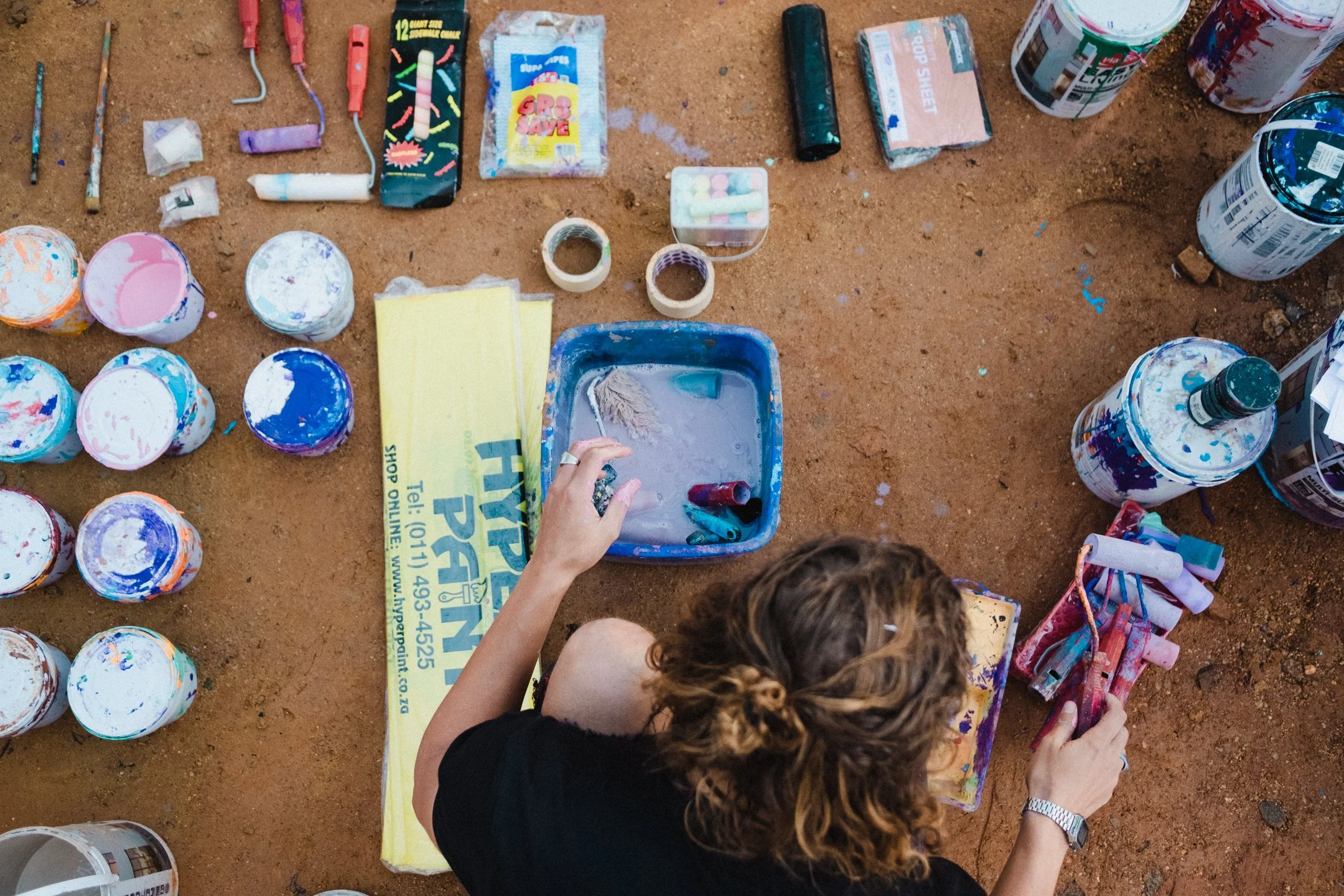The Essential Muralist’s Kit – A Guide for South African Artists
Before you even think about how much it’s going to cost to paint a mural in South Africa, you need to drop the mindset of scarcity. Mural painting is not just an art—it’s a craft that thrives on an abundance mindset. You will need more materials than you think, and the best way to succeed is to be ready before the job arrives.
When you become a muralist, you’re not just an artist—you’re a contractor. Like plumbers, electricians, or tilers, you have tools, gear, and expenses. The difference is: your work is big, bold, and visible. And like any contractor, if you’re always scrambling for supplies at the last minute, you’ll lose both time and opportunities.
Rule number one: Don’t wait for a job to buy your materials. Stay ready.
The Muralist’s Starter Kit
1. Pallets
The type of pallets I’m talking about are usually red, sometimes yellow. Start with at least five—more is even better. If you take care of them, they’ll last forever. Our trick? Plastic wrap. Before pouring paint onto a pallet, wrap it in plastic. When you’re done, throw away the plastic, not the pallet. Buy plastics in bulk—trust me, you’ll never regret it. Approx. cost: R200.
2. Rollers & Sponges
Rollers are a one-time investment—if you maintain them. Early in my career, we bought rollers for every project and ended up with a small mountain of them. Once you have enough, you’ll never run short. Sponges, on the other hand, are cheap but consumable (R15–R30 each).
3. Paint
Think 5-litre tins—minimum. Dulux is my go-to, but Plascon and Duram also get the job done.
Black & white are the most affordable and versatile; they should form the backbone of your palette.
Always keep the primary colours on hand. Even if you only need a little—for a SpongeBob eye, for example—it’s better to have 5 litres ready for future projects than to buy tiny tins every time.
Costs: Black/white around R500 each; other colours up to R1000 each (1 litre can be R250–R400).
4. Drop Sheets
Your best friend. Your religion. Cover every inch of the floor—always. Drop sheets save you hours of cleaning and headaches with clients. At R100 each, buy 20 and thank me later.
5. Bucket
One purchase, endless use. Fill it with water to clean brushes and rollers immediately after use. Under R100.
6. Ladder
A telescopic ladder is ideal for mobility and compact storage. You can find these on Takealot. For larger projects, especially multi-story walls, you’ll sometimes need scaffolding.
Extra Essentials
Transport: Any vehicle will dramatically boost your efficiency and reliability.
Mobility: Being able to bring all your gear without relying on others sets you apart as a professional.
The One-Hand Policy
If you want to make mural art a career, adopt the “one-hand policy”: make the client’s experience as easy as possible.
One payment.
No constant requests for deposits or material costs.
You take care of everything—start to finish.
Yes, sometimes you’ll take a hit on expenses, but that’s the price of excellent service. Become your client’s favourite muralist, and they’ll recommend you again and again.
In short: Be prepared. Have the gear. Make it easy for your clients. That’s how you turn mural painting into a thriving, abundant business.

